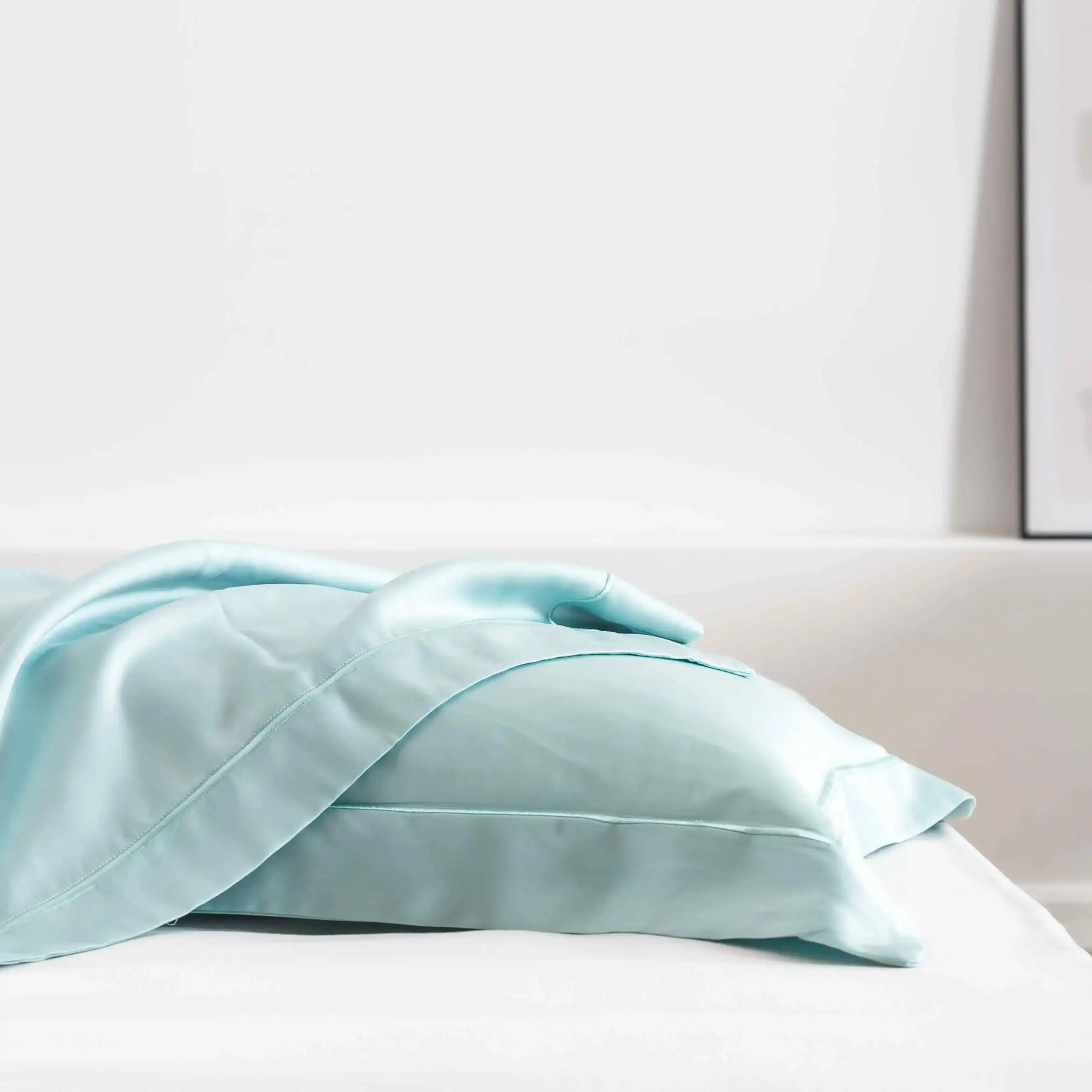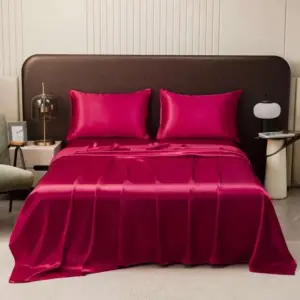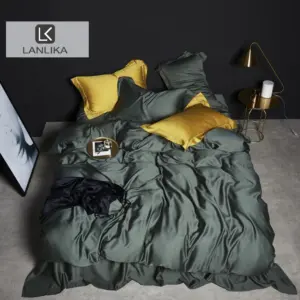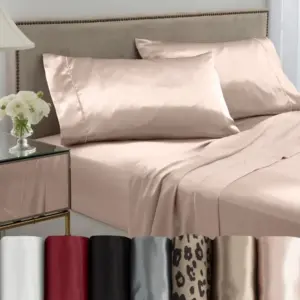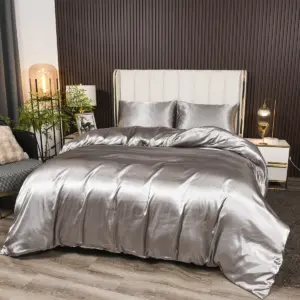Introduction: Why Silk Matters for Hot Sleepers
Tossing and turning through the night, sheets damp with sweat, constantly flipping your pillow for the cool side—if these experiences sound familiar, you’re likely a hot sleeper. This uncomfortable cycle of overheating, night sweats, and interrupted sleep can significantly impact your rest quality and overall well-being.
Enter silk, nature’s answer to temperature regulation. Unlike many synthetic fabrics that trap heat against your body, silk offers a natural solution through its unique composition. Made from protein fibers (fibroin) produced by silkworms, silk has been prized for centuries as a premium bedding material for good reason.
What makes silk particularly effective for hot sleepers includes:
- Natural temperature-regulating properties that adapt to your body
- Exceptional moisture-wicking capabilities that keep you dry
- Breathable structure that allows continuous air circulation
- Smooth surface that reduces friction-generated heat
However, not all silk is created equal. The specific weave of silk fabric dramatically impacts how effectively it can cool a hot sleeper. The right silk weave choice can make the difference between another restless night and blissful, cool slumber.
In this guide, we’ll explore the various silk weave options available, compare their cooling properties, and provide actionable recommendations to help you select the perfect silk bedding for a cooler night’s sleep.
Why Silk Naturally Excels for Hot Sleepers
Silk’s extraordinary cooling properties aren’t just marketing hype—they’re rooted in the fabric’s natural structure and composition.
Superior Thermoregulation
Unlike synthetic fabrics that tend to maintain a constant temperature, silk adapts to your body’s needs. Its protein structure allows it to warm you when you’re cold and cool you when you’re hot. This adaptability makes it ideal for hot sleepers who experience temperature fluctuations throughout the night.
Exceptional Moisture Management
Perhaps silk’s most remarkable feature for hot sleepers is its moisture-wicking capability. The fabric can absorb up to 30% of its weight in moisture without feeling damp against your skin. This means that even if you sweat during the night, silk quickly draws that moisture away from your body, helping you stay dry and comfortable.
Enhanced Breathability
Silk fibers have a naturally hollow core that allows for continuous air circulation. This structure creates microscopic air pockets throughout the fabric, providing a pathway for heat to escape and fresh air to flow. The result is a naturally ventilated sleep surface that prevents the stifling heat buildup common with synthetic materials.
Hypoallergenic Benefits
For hot sleepers who find their discomfort compounded by allergies, silk offers another advantage. Its tight weave and natural resistance to dust mites, mold, and mildew prevent the buildup of allergens that can trap heat and disrupt sleep. This creates a cleaner, cooler sleep environment.
The combination of these natural properties makes silk inherently suitable for those who struggle with overheating at night. But when these properties are enhanced through specific weaving techniques, silk bedding becomes even more effective in hot weather, offering hot sleepers the relief they’ve been searching for.
Silk vs. Other Cooling Fabrics: A Comparative Analysis
While several fabrics claim to offer cooling benefits, how does silk truly compare? Let’s examine how silk measures up against other popular bedding materials for hot sleepers:
| Feature | Silk | Cotton | Bamboo | Linen | Synthetic Cooling Fabrics |
|---|---|---|---|---|---|
| Breathability | Excellent | Good | Very Good | Excellent | Fair to Good |
| Moisture-Wicking | Excellent (30% of weight) | Good | Very Good | Good | Variable |
| Feel Against Skin | Ultra-smooth | Soft but can be rough | Very soft | Initially rough, softens with use | Often slippery or synthetic feeling |
| Temperature Regulation | Excellent | Good | Very Good | Excellent | Good (but often artificial) |
| Durability | Good with proper care | Excellent | Good | Very Good | Variable |
| Maintenance | Delicate | Easy | Moderate | Moderate | Easy |
| Cooling Rating for Hot Sleepers | 5/5 | 3/5 | 4/5 | 4/5 | 3/5 |
While high-quality cotton sheets are popular and accessible, they don’t match silk’s natural cooling properties. Cotton absorbs moisture but can retain it, potentially leaving hot sleepers feeling damp. Comparing silk to cotton sheets reveals that while cotton initially feels cool to touch, it doesn’t regulate temperature as effectively throughout the night.
Bamboo offers impressive cooling properties and is often marketed as an alternative to silk. However, silk’s protein structure provides superior temperature regulation and a uniquely smooth surface that reduces friction-generated heat.
Linen excels at breathability and moisture-wicking but lacks silk’s smooth texture. The rougher surface of linen can create more skin contact points, potentially generating more heat for sensitive sleepers.
Synthetic cooling fabrics often use chemical treatments or special weaving techniques to simulate cooling. While effective initially, these properties can diminish with washing. Silk’s cooling abilities, by contrast, are inherent to the fiber itself and remain effective throughout the fabric’s life with proper care.
For those specifically seeking optimal temperature regulation, exploring cooling silk sheet options designed with hot sleepers in mind can provide targeted relief.
Understanding Silk Weave Structures: The Foundation of Cooling
Before diving into specific silk weave options, it’s important to understand what “weave” actually means and how it impacts cooling performance.
A fabric’s weave refers to the specific pattern in which the vertical (warp) and horizontal (weft) threads are interlaced. This pattern significantly affects breathability, drape, texture, and ultimately how cool the fabric feels against your skin.
The three main categories of silk weaves include:
- Satin weaves – Characterized by a lustrous, smooth surface with floating yarns that create minimal contact points with skin
- Plain weaves – Feature an equal number of warp and weft threads in a simple over-under pattern
- Textured weaves – Incorporate twisted yarns or specialized techniques to create textured surfaces
The weave structure directly impacts how air circulates through the fabric. Looser weaves typically allow for greater airflow but may sacrifice durability. Tighter weaves offer durability but might reduce breathability unless specifically engineered for air circulation.
A common misconception is that thread count determines cooling properties. With silk, the weave structure and quality of the threads are far more important than simply counting threads. Understanding different silk weaves for bedding helps you make more informed choices based on your specific needs as a hot sleeper.
Charmeuse Silk: The Classic Cooling Option
Charmeuse is perhaps the most recognizable silk weave, featuring a satin weave structure that creates a lustrous, smooth front and a matte back. This distinctive construction makes it a favorite for luxury bedding and a top performer for hot sleepers.
The cooling magic of Charmeuse comes from its structure: the satin weave creates “floating” threads that significantly reduce contact points with your skin. With fewer contact points comes less friction, and consequently less heat generation. The smooth surface also reflects rather than absorbs body heat.
For hot sleepers, the ideal momme weight for Charmeuse typically falls between 19-22 momme. This range provides enough weight for quality moisture-wicking while remaining light enough for excellent breathability.
Pros for hot sleepers:
– Superior smoothness reduces friction and heat generation
– Excellent moisture-wicking capabilities
– Lustrous surface reflects rather than absorbs heat
– Provides balanced breathability and cooling
Cons for hot sleepers:
– Less breathable than very lightweight weaves like Habotai
– Requires careful washing to maintain cooling properties
– May feel too slippery for some sleepers
To maintain Charmeuse’s cooling properties, gentle hand washing or delicate machine washing in cold water is essential. Harsh detergents can damage the protein fibers that give silk its temperature-regulating abilities.
When comparing silk weave options, understanding the differences between Charmeuse and Habotai silk can help you determine which might better suit your specific sleeping needs.
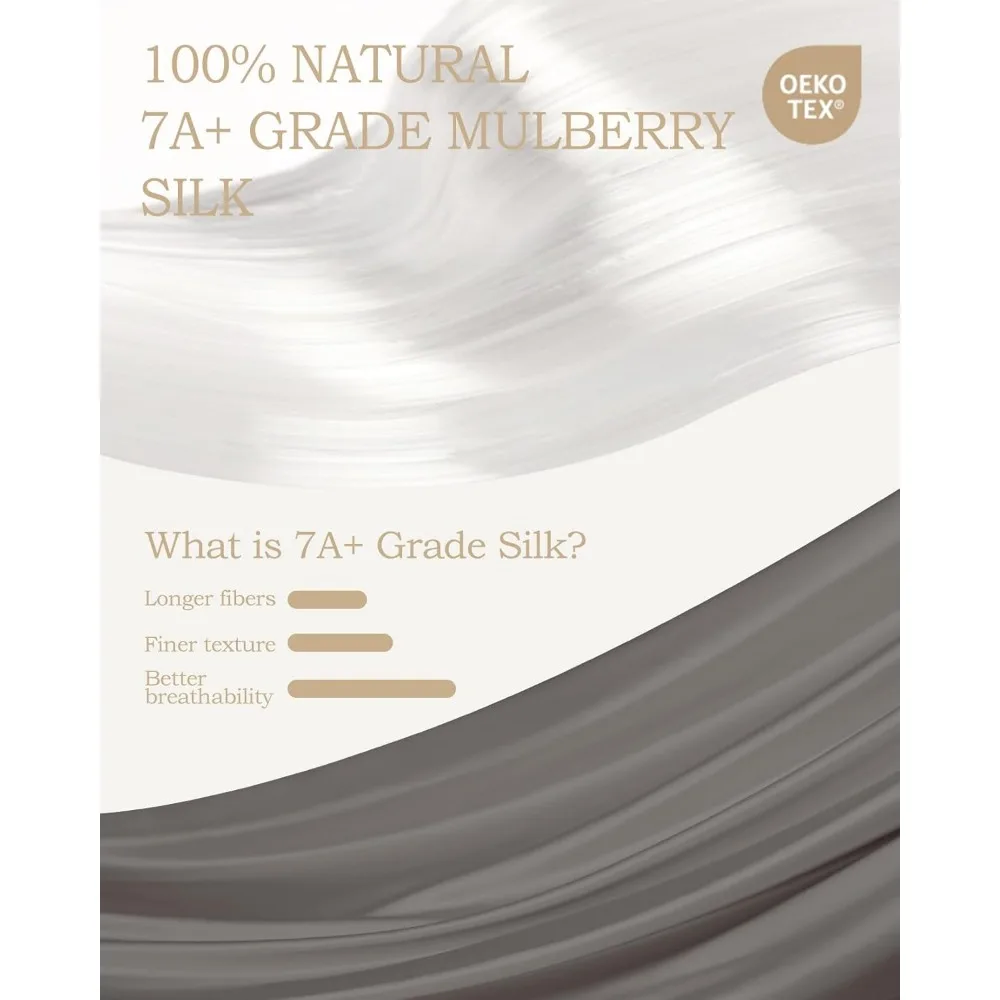
Habotai Silk: The Lightweight Breathability Champion
Habotai (sometimes called China silk or Habutai) features a plain weave structure with a simple over-under pattern that creates a lightweight, breathable fabric. This construction makes Habotai potentially the most breathable silk option available for hot sleepers.
The plain weave allows maximum airflow through the fabric, creating excellent ventilation that helps dissipate body heat throughout the night. Its lightweight nature (typically 15-19 momme) further enhances the cooling effect, making it especially suitable for those who struggle with significant overheating.
Pros for hot sleepers:
– Exceptional breathability and air circulation
– Lightweight feel that’s barely noticeable against skin
– Soft drape that minimizes skin contact
– Quick moisture absorption and evaporation
– Usually more affordable than heavier silk weaves
Cons for hot sleepers:
– Less durable than heavier weaves
– May require more frequent replacement
– Sometimes too light for those who prefer some weight
– May not wick moisture as effectively as slightly heavier options
Hot sleepers should choose Habotai when maximum breathability is the top priority, especially in very hot climates or for those who experience significant night sweats. However, if you need a balance of durability and cooling, Charmeuse might be preferable.
The best silk weave for bedding ultimately depends on your specific needs. Habotai excels for pure breathability, while other weaves might offer better balances of durability, cooling, and moisture management.
Tussah (Wild) Silk: Natural Texture with Moderate Cooling
Tussah silk, also known as wild silk, offers a distinctly different option for hot sleepers who prefer natural texture over ultra-smooth surfaces. Unlike cultivated Mulberry silk, Tussah comes from wild silkworms that feed on oak and juniper leaves, resulting in shorter, coarser fibers with a more textured appearance.
Tussah typically employs a plain weave structure, but its cooling properties differ from Habotai due to the nature of its fibers. The irregular, shorter fibers create natural variations in the fabric that allow for air pockets and decent breathability while providing a more substantial feel.
Pros for hot sleepers:
– Good breathability with natural texture
– More rustic, organic feel that some sleepers prefer
– Usually more affordable than Mulberry silk options
– Slightly more durable than very lightweight silk weaves
– Often produced through more sustainable methods
Cons for hot sleepers:
– Not as smooth or cooling as Charmeuse or Habotai
– Less consistent moisture-wicking due to fiber irregularity
– Texture may create more skin contact points, potentially increasing friction
– Often has a slightly golden or beige natural color that can’t be dyed pure white
For hot sleepers who find ultra-smooth fabrics uncomfortable or prefer bedding with more character and texture, Tussah provides a good compromise. While not the absolute coolest option, it offers decent temperature regulation with a unique feel that many find appealing.
Those seeking the purest cooling properties might prefer Mulberry silk sheets, which offer more consistent fiber quality and typically better temperature regulation.
Crepe de Chine and Specialized Silk Weaves: Niche Options
For hot sleepers looking beyond the standard options, Crepe de Chine and other specialized silk weaves offer interesting alternatives with unique cooling properties.
Crepe de Chine features highly twisted yarns that create a slightly pebbled, matte surface with a subtle texture. This distinctive structure affects cooling in two important ways: the texture reduces skin contact points (which can help reduce heat transfer), while the twisted yarns create tiny air pockets throughout the fabric.
Pros of Crepe de Chine for hot sleepers:
– Reduced skin contact due to textured surface
– Good air circulation through microscopic spaces between twisted yarns
– Less clingy than smoother weaves, which can feel cooler
– Moderate moisture-wicking capabilities
– Matte appearance some sleepers prefer aesthetically
Cons of Crepe de Chine for hot sleepers:
– Not as instantly cooling as Charmeuse or Habotai
– Texture may feel less luxurious to some
– Typically heavier than very lightweight options
– Often more challenging to find in bedding applications
Other specialty silk weaves worth considering include:
- Four-ply silk: Made with multiple twisted threads for durability, but generally less cooling than lighter weaves
- Georgette: Features a crepe-like texture with good breathability but is rarely used for bedding
- Gauze silk: Ultra-lightweight and breathable but too delicate for most bedding applications
These specialized weaves serve specific niches and might appeal to hot sleepers with particular preferences for texture or aesthetics. For more detailed information about various options, exploring different silk fabric types can help identify the perfect match for your needs.
Comprehensive Silk Weave Comparison for Hot Sleepers
To help you make the best choice for your specific needs, here’s a detailed comparison of the major silk weaves based on their cooling properties:
| Feature | Charmeuse | Habotai | Tussah | Crepe de Chine |
|---|---|---|---|---|
| Weave Structure | Satin | Plain | Plain | Crepe (twisted) |
| Cooling Efficiency | 4.5/5 | 5/5 | 3.5/5 | 3.5/5 |
| Texture/Feel | Ultra-smooth, lustrous | Light, soft | Natural, slightly textured | Slightly pebbled, matte |
| Ideal Momme for Cooling | 19-22 | 15-19 | 16-22 | 16-20 |
| Best Applications | Sheets, pillowcases | Hot climate sheets, summer bedding | Casual bedding, rustic aesthetics | Decorative items, specialty uses |
| Maintenance Level | Moderate | Delicate | Easy | Moderate |
| Price Range | $$-$$$ | $-$$ | $-$$ | $$-$$$ |
| Overall Rating for Hot Sleepers | 4.5/5 | 4.5/5 | 3/5 | 3.5/5 |
For the hottest sleepers dealing with significant night sweats, Habotai’s exceptional breathability makes it a top contender, especially for summer use or in hot climates. The fabric’s lightweight nature allows maximum airflow and quick moisture evaporation.
For those seeking a balance of cooling properties and durability, Charmeuse offers excellent temperature regulation with a bit more substance. Its smooth surface creates minimal friction, and the satin weave structure efficiently wicks moisture while still allowing adequate airflow.
Hot sleepers who prefer natural texture and don’t need the absolute maximum in cooling might appreciate Tussah silk. Its more substantial feel and textural qualities provide a different sleeping experience while still offering better temperature regulation than most non-silk fabrics.
Understanding silk bedding’s temperature regulation properties can help you choose the right weave based on your specific needs and sleeping patterns.
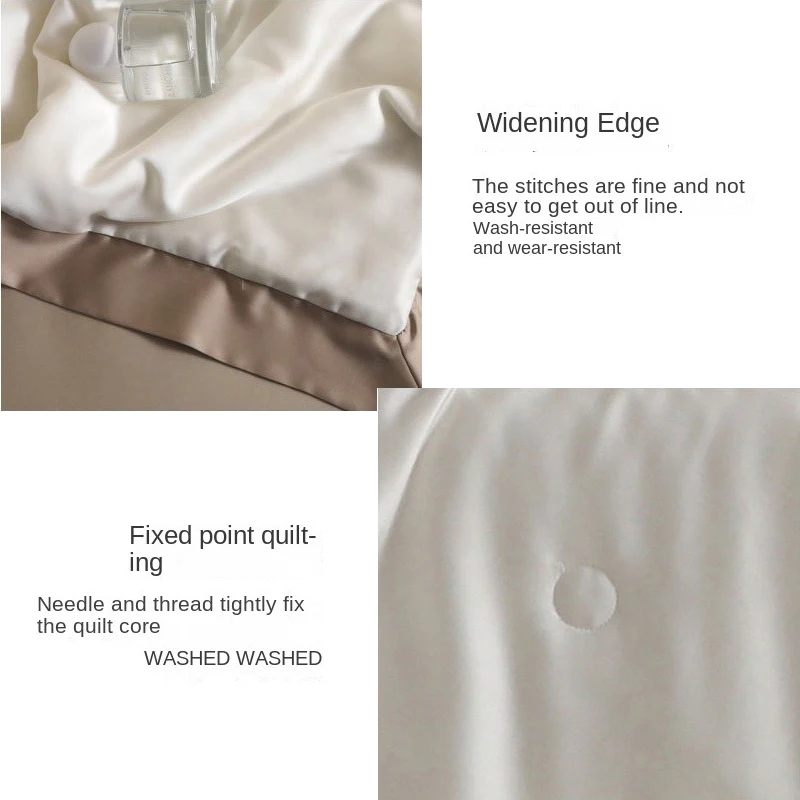
The Critical Role of Momme Weight for Temperature Regulation
While the weave structure significantly impacts cooling properties, momme weight plays an equally important role in how effectively silk regulates temperature for hot sleepers.
Momme weight (pronounced “moh-mee”) measures silk’s density—specifically, the weight in pounds of 100 yards of silk fabric, 45 inches wide. This measurement directly affects breathability, moisture-wicking capability, and overall cooling performance.
For hot sleepers, understanding momme weight ranges helps make informed choices:
16-19 momme:
– Maximum breathability
– Lighter feel against the skin
– Excellent for extremely hot sleepers
– Less durability and potentially shorter lifespan
– May not wick moisture as effectively as slightly heavier weights
19-22 momme:
– Balanced cooling and moisture-wicking
– Better durability while maintaining good breathability
– Optimal range for most hot sleepers
– Effectively pulls moisture away from the body
– Good air circulation without being too fragile
22-25 momme:
– Enhanced durability
– Still provides good temperature regulation
– Better moisture-wicking but slightly reduced breathability
– Good option for moderate hot sleepers who prioritize longevity
– More substantial feel that some sleepers prefer
Above 25 momme:
– May trap more heat due to increased density
– Superior durability but potentially at the cost of cooling
– Not typically recommended for severe hot sleepers
– Better suited to cooler environments or those who only occasionally overheat
A common misconception is that the lightest silk will always be coolest. In reality, extremely light silk (below 16 momme) often lacks sufficient fiber density to effectively wick moisture away from the body. The ideal range for most hot sleepers is typically 19-22 momme, offering the best balance of breathability, moisture management, and durability.
For those seeking optimal cooling performance, exploring pure silk sheet options in the appropriate momme range can provide the perfect balance of temperature regulation and quality.
Mulberry vs. Wild Silk: Fiber Quality Impact on Cooling
Beyond weave structure and momme weight, the type of silk fiber significantly influences cooling performance. The two main categories—Mulberry and wild silk—offer different cooling properties due to their inherent characteristics.
Mulberry silk, produced by silkworms fed exclusively on mulberry leaves in controlled environments, features long, uniform fibers that create consistent fabric with superior temperature regulation. These longer fibers allow for smoother weaves with fewer “knots” or irregularities that could create additional contact points with skin.
Wild silk varieties (including Tussah, Eri, and Muga) come from silkworms in uncontrolled environments feeding on various vegetation. This results in:
– Shorter, less uniform fibers
– More textured fabric surface
– Slightly reduced cooling efficiency
– Greater durability in some cases
– More natural color variations
For hot sleepers, Mulberry silk typically offers superior cooling benefits due to:
– Longer fibers creating smoother surfaces with less friction
– More consistent moisture-wicking throughout the fabric
– Better temperature regulation due to uniform structure
– Higher protein content that enhances natural cooling properties
Silk grading also impacts cooling performance. The highest grades (6A) indicate the purest, most consistent silk with optimal temperature-regulating properties. Lower grades may contain irregularities that reduce cooling efficiency and comfort.
While Mulberry silk generally offers better cooling properties, some hot sleepers might prefer wild silk varieties for their durability, sustainability aspects, or unique textural qualities. Understanding the best types of silk for bedding helps you make informed decisions based on your specific needs.
What Hot Sleepers Should Avoid in Silk Bedding
When shopping for cooling silk bedding, being aware of potential pitfalls is just as important as knowing what to look for. Hot sleepers should be particularly vigilant about avoiding these common issues:
• “Silk satin” labeling tricks: Many products labeled “silk satin” contain no actual silk—they’re often 100% polyester. Always look for “100% silk” or “pure silk” with clear momme weight specifications.
• Silk blends with synthetic fibers: Even small percentages of polyester, nylon, or rayon can significantly compromise silk’s natural cooling properties. These synthetic additions trap heat and reduce breathability.
• Excessively high momme weights: While quality matters, silk above 30 momme may be too dense for hot sleepers, potentially trapping heat rather than allowing it to dissipate.
• Ultra-dense or heavily textured weaves: Jacquard silk or very tight weaves may look luxurious but often provide less airflow than simpler weave structures.
• Low-grade silk: Inferior silk often has shorter fibers and more irregularities that can create additional friction points against skin, generating more heat.
• Chemically treated silk: Some treatments designed to enhance appearance or durability can coat the natural fibers and block their inherent cooling properties. Look for untreated or OEKO-TEX certified options.
• Silk with synthetic linings or backings: Some manufacturers add non-silk backings to increase durability, but these additions can significantly reduce breathability.
• Misleading thread count claims: Unlike cotton, thread count is not a useful measure for silk quality or cooling properties. Be wary of marketing that emphasizes thread count over momme weight.
Quality silk pillowcases from reputable manufacturers typically avoid these issues, providing genuine cooling benefits while maintaining silk’s natural properties.
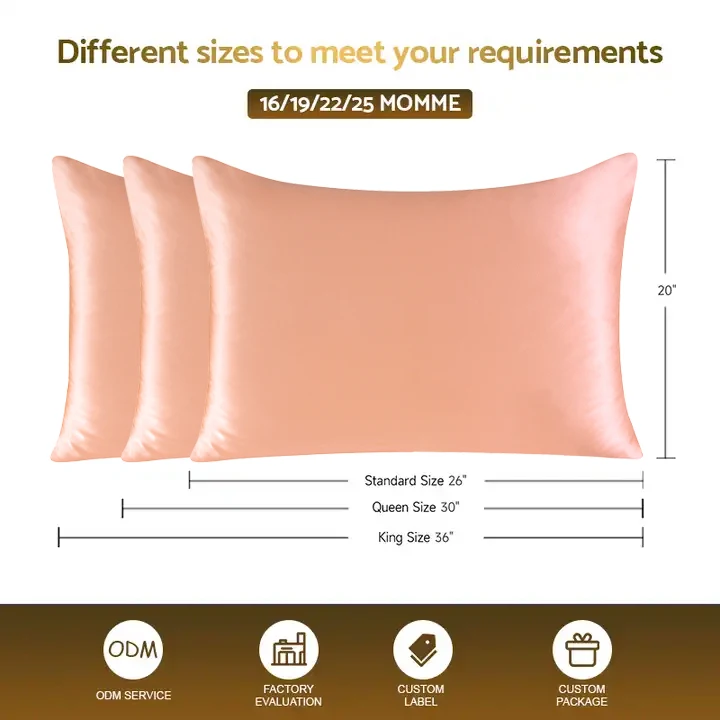
How to Choose the Ideal Silk Bedding for Hot Sleepers
With so many factors to consider, selecting the perfect silk bedding might seem overwhelming. This practical checklist simplifies the process, helping hot sleepers make informed decisions:
Choose the right silk type:
– Prioritize Mulberry silk for its superior cooling properties and consistent fiber quality
– Look for Grade 6A Mulberry silk when possible for optimal temperature regulationSelect appropriate weave structure:
– For maximum breathability: Habotai silk
– For balanced cooling and durability: Charmeuse silk
– For those who prefer textured surfaces: Crepe de Chine or Tussah silkVerify optimal momme weight:
– For extreme hot sleepers: 16-19 momme
– For balanced cooling and durability: 19-22 momme
– For moderate hot sleepers who prioritize longevity: 22-25 mommeCheck for proper certifications:
– OEKO-TEX certification ensures no harmful chemicals that might block cooling properties
– Look for transparent manufacturing informationPrioritize bedding pieces by impact:
– Pillowcases provide significant cooling benefits with lower investment
– Sheets offer full-body temperature regulation
– Duvet covers balance temperature regulation with practical considerations
Full-size Silk Sheets, King Size Silk Sheets, Queen Size Silk Sheets, Twin Size Silk Sheets, Washable Silk Sheets
Price range: $95.95 through $178.37 Select options This product has multiple variants. The options may be chosen on the product page100% Silk Sheets, Green Silk Sheets, King Size Silk Bedding Set, Mulberry Silk Bedding Sets, Queen Size Silk Bedding Set
Price range: $1,246.21 through $1,615.22 Select options This product has multiple variants. The options may be chosen on the product pagePink Silk Sheets, Twin Size Silk Sheets
$171.80 Select options This product has multiple variants. The options may be chosen on the product pageFull-size Silk Sheets, Pink Silk Sheets
$136.31 Select options This product has multiple variants. The options may be chosen on the product pageGrey Silk Sheets, Silk Sheet and Pillowcase Set
Price range: $88.20 through $146.64 Select options This product has multiple variants. The options may be chosen on the product pageBamboo Silk Sheets, Cooling Silk Sheets
Price range: $130.76 through $177.80 Select options This product has multiple variants. The options may be chosen on the product page
When evaluating pricing, remember that genuine silk is an investment. While premium options may seem expensive, their superior cooling properties and durability often provide better value over time compared to lower-quality alternatives that need frequent replacement.
For hot sleepers on a budget, starting with silk pillowcases offers significant cooling benefits for the area most prone to overheating—your head and face—while being more affordable than complete sheet sets.
Understanding the nuances of selecting luxury silk weaves ensures you make choices aligned with your specific needs and sleeping challenges.
Caring for Silk Bedding to Preserve Cooling Properties
Proper care is essential for maintaining silk’s cooling benefits over time. Improper washing or storage can damage the natural protein structure that gives silk its temperature-regulating properties.
Washing Instructions:
– Use cold water (30°C/86°F or below) to preserve fiber integrity
– Select a gentle, pH-neutral detergent specifically formulated for silk
– Hand wash when possible, or use washing machine’s most gentle cycle
– Avoid bleach, fabric softeners, and enzymes which damage silk proteins
– Keep similar colors together to prevent bleeding
Drying Recommendations:
– Never tumble dry silk bedding
– Gently squeeze out excess water (don’t wring or twist)
– Roll in a clean towel to remove moisture
– Hang or lay flat to air dry
– Keep away from direct sunlight which can fade colors and damage fibers
– Allow to dry completely before using or storing
Storage Best Practices:
– Store fully dry to prevent mildew
– Use breathable cotton storage bags rather than plastic
– Avoid cedar chests which can dry out silk’s natural proteins
– Store away from direct sunlight
Signs that silk bedding is losing its cooling properties include:
– Increased stiffness or roughness to touch
– Reduced moisture-wicking (feeling damp longer)
– Visual changes like pilling or irregular texture
– Diminished sheen and luster
With proper care, high-quality silk sheets should maintain their cooling properties for many years, making them a worthwhile investment for hot sleepers seeking lasting relief.
Frequently Asked Questions About Silk for Hot Sleepers
Is all silk naturally cooling?
While all pure silk has inherent temperature-regulating properties, cooling efficiency varies significantly based on weave structure, momme weight, and fiber quality. Habotai and Charmeuse weaves typically offer the best cooling performance for hot sleepers.
How does momme weight affect temperature regulation?
Momme weight determines silk’s density. For hot sleepers, the 19-22 momme range typically offers optimal balance between breathability and moisture-wicking. Lower weights (15-19 momme) maximize breathability but may offer less moisture management, while higher weights provide durability but potentially reduced airflow.
Can silk ever be too cool for some sleepers?
Yes. Silk’s excellent temperature regulation means it can feel cool year-round. Some sleepers might find lightweight silk too cooling in winter months. In these cases, layering with additional bedding or selecting slightly higher momme weights (22-25) provides better balance.
What’s the difference between silk and satin for cooling?
Silk is a natural fiber with inherent cooling properties, while satin is a weaving technique that can be applied to any fiber (including silk, polyester, or nylon). Polyester satin traps heat and moisture, making it unsuitable for hot sleepers, while silk satin (Charmeuse) offers excellent cooling benefits.
Does silk shrink when washed and affect its cooling?
When properly washed according to care instructions, quality silk typically shrinks minimally (2-3% maximum). This minor shrinkage doesn’t significantly impact cooling properties. However, improper washing with hot water can cause greater shrinkage that might affect the fabric’s breathability and cooling efficiency.
Can silk pillowcases alone help hot sleepers?
Yes. Since the head retains and generates significant body heat, silk pillowcases provide targeted cooling for one of the most thermally sensitive areas. Many hot sleepers find silk pillowcases alone make a noticeable difference in comfort and sleep quality.
How often should silk bedding be washed to maintain cooling?
Washing every 10-14 days is generally sufficient to maintain cleanliness without excessive wear. However, hot sleepers who experience night sweats might prefer weekly washing. Always follow proper silk washing techniques to preserve cooling properties.
Is silk worth the investment for hot sleepers?
For those who struggle significantly with overheating during sleep, high-quality silk bedding often provides relief that justifies the investment. The combination of temperature regulation, moisture management, and durability with proper care makes silk a worthwhile long-term solution for many hot sleepers.

